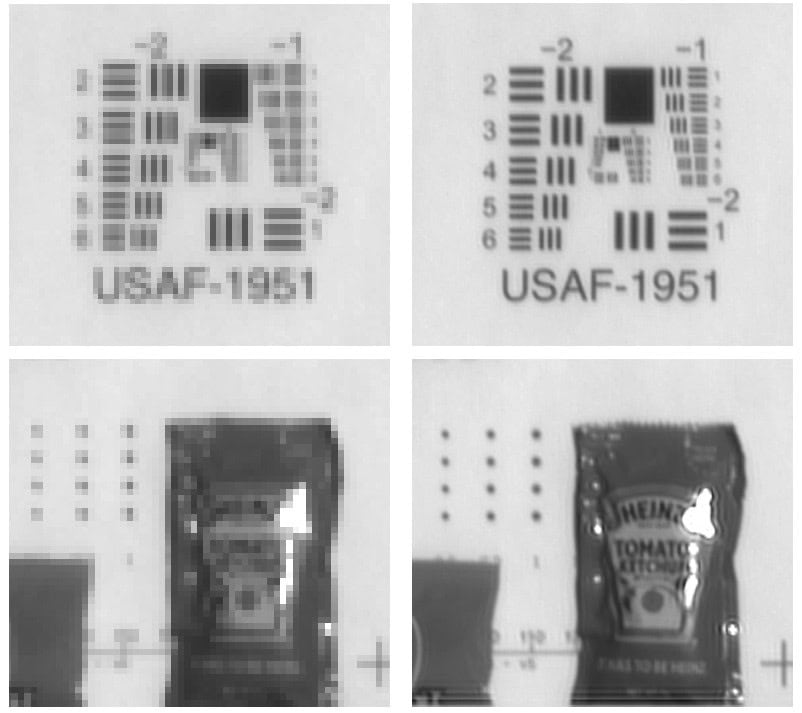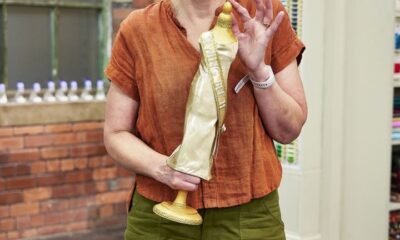Science
Researchers Enhance Image Resolution Using Motion Blur Techniques

Researchers at Brown University have developed a groundbreaking deconvolution algorithm that significantly enhances image resolution by utilizing motion blur. This innovative technique allows standard cameras to produce images with gigapixel quality, opening new possibilities in fields such as biological imaging and archival work.
The study’s co-leader, Rashid Zia, expressed the team’s interest in exploring the potential of computational photography. “We recognized that there should be a way to decode the higher-resolution information that motion encodes onto a camera image,” he stated. Traditional methods for reconstructing high-resolution images from lower-quality ones have limitations, often yielding only marginal increases in resolution. The presence of motion blur further complicates this process, restricting the achievable resolution.
New Algorithm Overcomes Traditional Limitations
Zia, alongside his colleague Pedro Felzenszwalb, worked to address these challenges. They successfully reconstructed high-resolution images from low-resolution ones captured by moving cameras. The novel algorithm analyzes the “tracks” left by light as the camera moves, enabling precise pinpointing of fine details that would otherwise be lost. This reconstruction takes place on a sub-pixel grid, allowing for a more detailed output.
“There was some prior theoretical work that suggested this shouldn’t be possible,” Felzenszwalb noted. “But we show that there were a few assumptions in those earlier theories that turned out not to be true.” Their findings serve as a proof of concept, demonstrating the potential for recovering more information by leveraging motion.
In practical applications, the algorithm has shown promising results. In one experiment, researchers utilized a standard camera to capture a series of images in a grid of high-resolution locations. They also experimented with capturing images while the camera sensor was in motion. The results confirmed that the algorithm could produce images with significantly greater resolution than those without motion blur.
Implications for Various Fields
The implications of this research are vast. According to Zia, the results are particularly relevant for scenarios requiring high resolution over large fields of view, such as in microscopy and satellite imaging. Other potential applications include super-resolution archival photography of artworks and artifacts, as well as capturing images from moving aircraft.
The team is now focused on exploring the mathematical limits of their approach and demonstrating its practical applications in consumer cameras and mobile devices. “We hope to soon share results from experiments using scientific-grade CCDs and thermal focal plane arrays,” Zia added.
Felzenszwalb pointed out that while existing systems aim to eliminate motion blur, no one had previously attempted to use it as a means to enhance resolution. “We’ve shown that’s something you could definitely do,” he remarked.
The researchers presented their findings at the International Conference on Computational Photography and have made their work available on the arXiv pre-print server, contributing to the ongoing dialogue in the field of computational imaging.
-

 Entertainment1 month ago
Entertainment1 month agoAnn Ming Reflects on ITV’s ‘I Fought the Law’ Drama
-

 Entertainment2 months ago
Entertainment2 months agoKate Garraway Sells £2 Million Home Amid Financial Struggles
-

 Health1 month ago
Health1 month agoKatie Price Faces New Health Concerns After Cancer Symptoms Resurface
-

 Entertainment2 months ago
Entertainment2 months agoKim Cattrall Posts Cryptic Message After HBO’s Sequel Cancellation
-

 Entertainment1 month ago
Entertainment1 month agoWhere is Tinder Swindler Simon Leviev? Latest Updates Revealed
-

 Entertainment2 months ago
Entertainment2 months agoMasterChef Faces Turmoil as Tom Kerridge Withdraws from Hosting Role
-

 Entertainment3 months ago
Entertainment3 months agoSpeculation Surrounds Home and Away as Cast Departures Mount
-

 World1 month ago
World1 month agoCole Palmer’s Mysterious Message to Kobbie Mainoo Sparks Speculation
-

 Entertainment1 month ago
Entertainment1 month agoITV’s I Fought the Law: Unraveling the True Story Behind the Drama
-

 Entertainment1 month ago
Entertainment1 month agoCoronation Street’s Carl Webster Faces Trouble with New Affairs
-

 Entertainment3 weeks ago
Entertainment3 weeks agoCaz Crowned Winner of The Great British Sewing Bee, Overjoyed by Triumph
-

 Entertainment2 months ago
Entertainment2 months agoAldi Launches Cozy Autumn Fragrance Range Ahead of Halloween









